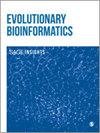HNF4A-Bridging the Gap Between Intestinal Metaplasia and Gastric Cancer
IF 1.5
4区 生物学
Q4 EVOLUTIONARY BIOLOGY
引用次数: 0
Abstract
Background:Intestinal metaplasia (IM) of gastric epithelium has traditionally been regarded as an irreversible stage in the process of the Correa cascade. Exploring the potential molecular mechanism of IM is significant for effective gastric cancer prevention.Methods:The GSE78523 dataset, obtained from the Gene Expression Omnibus (GEO) database, was analyzed using RStudio software to identify the differently expressed genes (DEGs) between IM tissues and normal gastric epithelial tissues. Subsequently, gene ontology (GO) analysis, Kyoto Encyclopedia of Genes and Genomes (KEGG) enrichment analysis, Gene Set Enrichment Analysis (GESA), and protein-protein interaction (PPI) analysis were used to find potential genes. Additionally, the screened genes were analyzed for clinical, immunological, and genetic correlation aspects using single gene clinical correlation analysis (UALCAN), Tumor–Immune System Interactions Database (TISIDB), and validated through western blot experiments.Results:Enrichment analysis showed that the lipid metabolic pathway was significantly associated with IM tissues and the apolipoprotein B ( APOB) gene was identified in the subsequent analysis. Experiment results and correlation analysis showed that the expression of APOB was higher in IM tissues than in normal tissues. This elevated expression of APOB was also found to be associated with the expression levels of hepatocyte nuclear factor 4A ( HNF4A) gene. HNF4A was also found to be associated with immune cell infiltration to gastric cancer and was linked to the prognosis of gastric cancer patients. Moreover, HNF4A was also highly expressed in both IM tissues and gastric cancer cells.Conclusion:Our findings indicate that HNF4A regulates the microenvironment of lipid metabolism in IM tissues by targeting APOB. Higher expression of HNF4A tends to lead to a worse prognosis in gastric cancer patients implying it may serve as a predictive indicator for the progression from IM to gastric cancer.HNF4A--弥合肠增生与胃癌之间的鸿沟
背景:胃上皮的肠化生(Intestinal metaplasia,IM)传统上被认为是科雷亚级联过程中的一个不可逆阶段。方法:使用 RStudio 软件分析从基因表达总库(GEO)数据库中获得的 GSE78523 数据集,以确定 IM 组织与正常胃上皮组织之间的差异表达基因(DEGs)。随后,利用基因本体(GO)分析、京都基因组百科全书(KEGG)富集分析、基因组富集分析(GESA)和蛋白-蛋白相互作用(PPI)分析来寻找潜在基因。结果:富集分析表明,脂质代谢通路与IM组织显著相关,并在随后的分析中发现了载脂蛋白B(APOB)基因。实验结果和相关分析表明,IM 组织中 APOB 的表达高于正常组织。研究还发现,APOB 的高表达与肝细胞核因子 4A (HNF4A)基因的表达水平有关。研究还发现,HNF4A 与胃癌的免疫细胞浸润有关,并与胃癌患者的预后有关。结论:我们的研究结果表明,HNF4A 通过靶向 APOB 调节 IM 组织中脂质代谢的微环境。结论:我们的研究结果表明,HNF4A通过靶向APOB调节IM组织中的脂质代谢微环境,HNF4A表达越高,胃癌患者的预后越差。
本文章由计算机程序翻译,如有差异,请以英文原文为准。
求助全文
约1分钟内获得全文
求助全文
来源期刊

Evolutionary Bioinformatics
生物-进化生物学
CiteScore
4.20
自引率
0.00%
发文量
25
审稿时长
12 months
期刊介绍:
Evolutionary Bioinformatics is an open access, peer reviewed international journal focusing on evolutionary bioinformatics. The journal aims to support understanding of organismal form and function through use of molecular, genetic, genomic and proteomic data by giving due consideration to its evolutionary context.
 求助内容:
求助内容: 应助结果提醒方式:
应助结果提醒方式:


